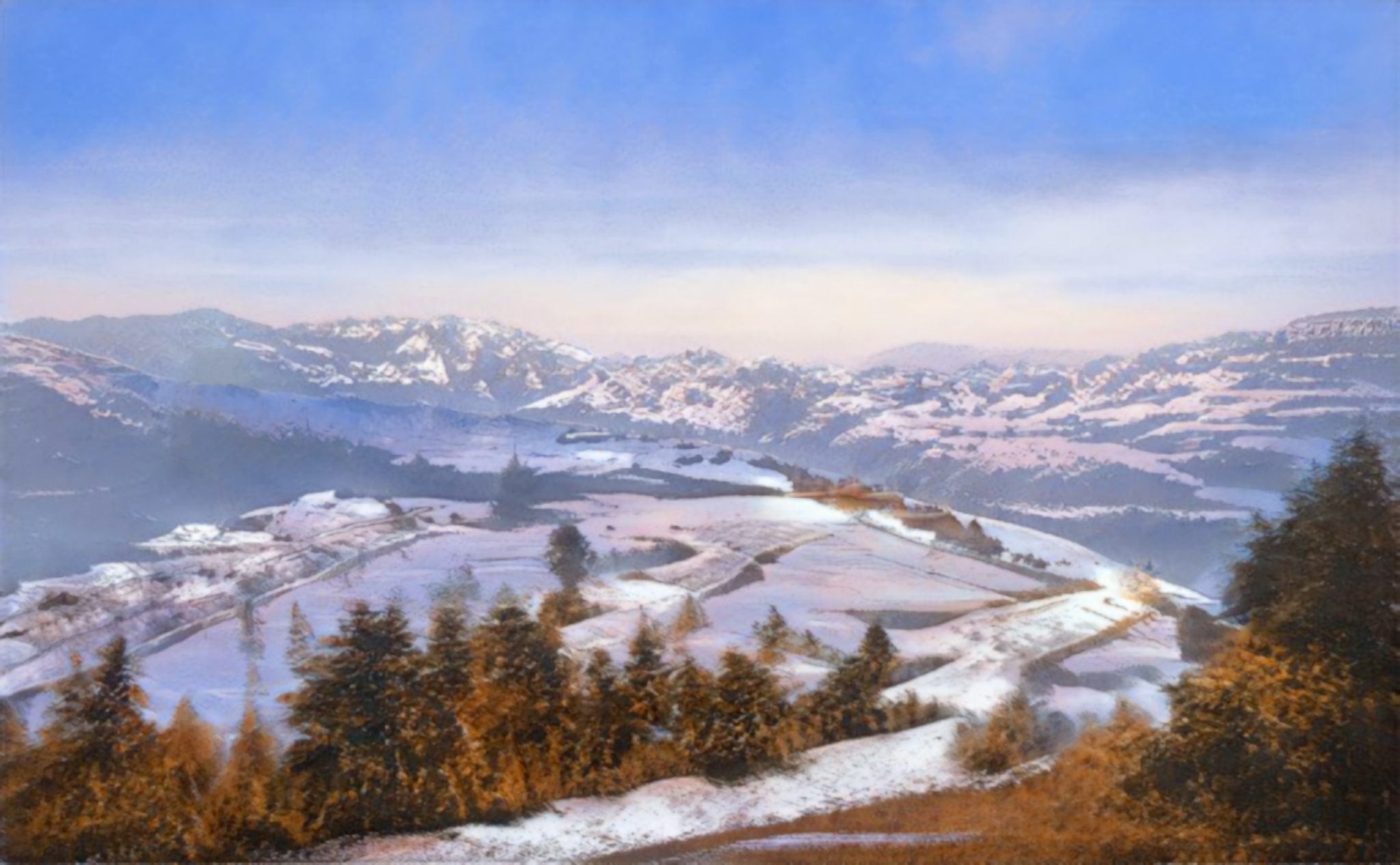The Winter of Peace
This piece, by an unknown artist, shows the tropical foothills of southwestern Urubarra during the Winter of Peace.
Plunged Into Darkness
Several species are believed to have gone extinct during the Winter of Peace, including the famed red maize of Anzakar as well as several species of birds that have not been seen in Gibila since the event. Crops failed due to the lack of sunlight and poisonous ash in the rivers which fed irrigation canals. Livestock quickly starved as their food sources shriveled and died. Many Adinites turned to consuming ambrita during this period. There were not many Sherdasan shapers left to speak of, and the few remaining could not create enough ambrita to support the population.Rebuilding Through the Chaos
Guilty over their part in causing the Winter of Peace, the Five Nations sent what food they could to Sherdasa, before the treaties were even finalized. Adinite shapers went along to provide aid to those they had just finished slaughtering. Volunteers helped to rebuild the damage their golems had done to the Sherdasan cities, feeding the people with the ambrita they produced. The Sherdasan Udug, in turn, taught the Adinite kursu a mildly blasphemous trick they had learned during an earlier period of famine. Kursu are not only capable of repairing tissue, they are also able to grow it. The Adinites were able to supplement their diet of ambrita with a nearly limitless supply of meat using this ability, avoiding the side effect of infertility caused by an exclusive ambrita diet and providing more food for all.Lessons to be Learned
Surviving the Winter of Peace was only accomplished through the disparate species of Adin working together, and it was a lesson not to be forgotten. Though there will always be some that hold animosity towards their old foes, most of Adin emerged from the Winter of Peace ready to cooperate and learn from each other. At the marking of the third anniversary of the end of the Great War, though Izilakur was still belching out ash and poison, it was markedly less than before. The Winter of Peace was declared to be over.
"Of course, we ended the war. But to rejoice in that would mean celebrating the deaths of countless creatures, worldwide starvation, and perhaps more of our people dead than if we had just let the war continue. We take responsibility for what we did. We thought it was the right thing at the time, but every moment since has been full of doubt.
We didn't win. No one can claim victory when the entire world suffers."
- Roderick Rothwald,
Reflections on What We Lost




Great idea to include environmental impacts on events happening among characters and counties.
Share your articles on Lavani's Reading List!